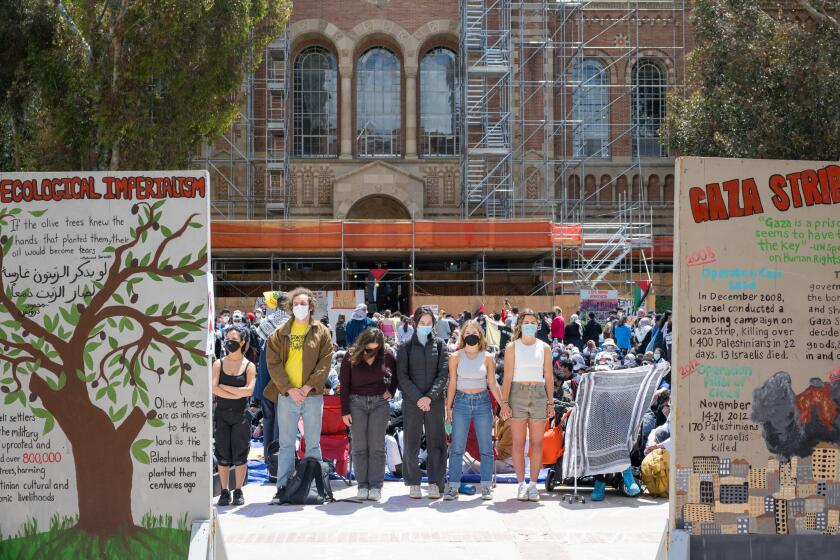Lead paint: All over but the lawsuits
As if California and its municipalities were not already making life difficult for businesses and taxpayers, the Golden State’s courts could pile on too.
On July 15, a trial began in San Jose, in which seven California counties (Santa Clara, Alameda, Los Angeles, Monterey, San Mateo, Solano and Ventura) and three cities (Oakland, San Diego and San Francisco) are suing five companies that once manufactured paint containing lead. The lawsuit alleges that these companies’ sale of lead-based paint created a “public nuisance” and that such companies should pay the municipalities a total of $1.4 billion for the cost of “abating” the problem — in essence, to support government-led efforts to find and replace all lead paint from older buildings.
The case shouldn’t have survived this long because public nuisance laws simply don’t apply. Besides, the dangers of lead are already being effectively mitigated in California.
High exposure to lead can adversely affect neural development in children. Concerns about exposure prompted a federal ban on the sale of lead-based paint in 1978, in addition to precipitating cleanups of drinking water and the transition toward unleaded gasoline in automobiles.
Some paint containing lead remains, however, on the exteriors of homes painted before then, as well as in the interiors of homes painted before the 1950s, when lead paint was largely relegated to outdoor use because of emerging safety concerns. While California does place liability on landlords to reduce lead-based hazards from ill-maintained painted structures, it does not require the elimination of all lead paint. Such a rule makes sense given the Environmental Protection Agency’s determination that “lead paint is usually not a problem” when “the paint is in good shape.”
Overall, the reduction of lead exposure since 1978 has been a public policy success. Children’s exposure has dropped more than 99% since the late 1970s. By 2011, only half of 1% of children had blood-lead levels above the Centers for Disease Control and Prevention’s threshold, down from 7.6% in 1997. Indeed, levels had dropped so low that the CDC, urged by public health advocates hoping to identify places where lead was still in the environment, halved that threshold in 2012.
California’s exposure levels are generally below the national average, and some of the municipalities in the suit report not a single recent instance of a child testing positive for elevated levels of lead. Many of the children who do test positive are among California’s sizable foreign-born population and were likely exposed abroad before coming to the United States.
This reduction of children’s lead exposure is attributable to the state’s comprehensive approach. About 25 years ago, the state established the Childhood Lead Poisoning Prevention Branch, funded by fees apportioned to the manufacturers of products that historically contained lead — including the corporate defendants now on trial.
The case unfolding in a San Jose courtroom sits strangely outside this positive public health record. It is the lone remaining lawsuit of its type in the nation. It was filed in 2000 but is only now reaching trial after two rounds of appeals in which state courts could have ended the litigation.
The strategy of filing cases against paint makers based on public nuisance laws traces to 1999, when Jack McConnell, a politically well-connected multimillionaire attorney in the Motley Rice law firm (which had led state lawsuits against tobacco companies), teamed with Rhode Island’s attorney general, Sheldon Whitehouse, to file the pioneer lead paint abatement lawsuit. It came to naught in the Rhode Island courts.
To date, in the seven other states where a public entity has filed a lead paint abatement case, the courts have ultimately thrown it out as legally inappropriate. It’s hard to disagree with the conclusion reached by the state supreme courts of Rhode Island and New Jersey that state public nuisance laws — derived from an English writ used centuries ago to force local officials to remove obstacles from roads and waterways — were not meant to apply to product manufacturers.
So why would those California counties and cities pursue the lawsuit? Perhaps the relationship between trial lawyers and political influence is part of the answer. In California, the local governments that embraced lead paint abatement litigation have farmed it out to private lawyers on a contingency basis. Those lawyers, in turn, are donors to California politicians’ campaigns.
For example, the Bay Area law firm involved in the California case, Cotchett, Pitre & McCarthy, has doled out more than $900,000 in California politics since the lead paint litigation started, in addition to more than $1.9 million to federal campaigns, overwhelmingly to Democrats. Of course, Cotchett, Pitre stands to make millions in contingency fees should the case come out against the paint companies.
The California courts have already passed up opportunities to join other states in quelling lead paint public nuisance lawsuits. Should they ultimately go their own way and order a massive abatement action, they would greatly enrich lawyers and paint abatement companies but do little to reduce children’s exposure to lead. And in a letter to the L.A. County Board of Supervisors, the Los Angeles County Boards of Real Estate expressed its concern over how an adverse ruling would affect the state’s still-recovering housing market.
A decision against the manufacturers here would send shock waves through a business community that hardly needs more reasons to flee the state. Let’s hope the California courts, this time, get it right.
James R. Copland is the director of the Manhattan Institute’s Center for Legal Policy and project director for the center’s Trial Lawyers, Inc. series of publications, which have focused on California’s legal climate and lead paint litigation.
More to Read
A cure for the common opinion
Get thought-provoking perspectives with our weekly newsletter.
You may occasionally receive promotional content from the Los Angeles Times.






